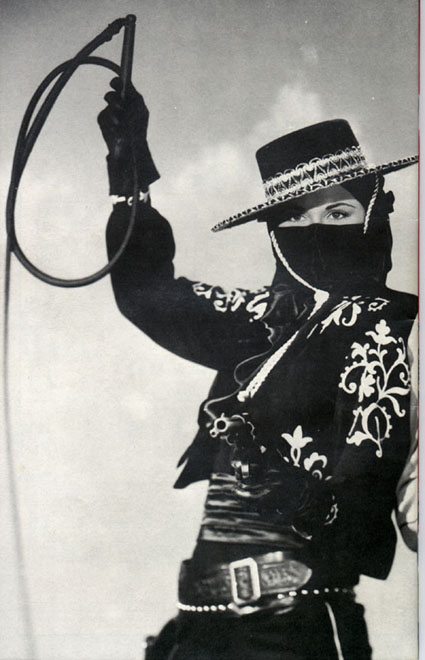By Sikivu Hutchinson
"It was nice to see Jesse Jackson attend the Fox parade. Otherwise, I would have been the only black person there."
Comment by a black writer, on the WGA Fox rally — November 9, 2007, DeadlineHollywood.com
While the Writers Guild of America strike has elicited much righteous indignation on both sides about whether or not writers are entitled to heftier shares of digital media, there continues to be a deafening silence on the issue of racial and gender equity in the industry. The spectacle of “A-list” celebs defiantly thrusting strike placards into the air with journeymen/women scribes has further illuminated the vast racial divide in a niche whose unabashed white male insularity puts other sectors of corporate America to shame. As far as diversity behind the cameras is concerned, it may as well still be 1955 with Ozzie and Harriet. According to a 2007 report by UCLA professor Darnell Hunt (commissioned by the WGA), writers of color account for less than 10% of the TV industry and command significantly less in salary than their white counterparts. Although writers of color represent a small portion of the WGA’s membership, their numbers are still greater in the guild than they are in the paid workforce. Shut out of gigs on major white-themed/dominated shows, ghettoized at the CW network and other “ethnic” venues, the 2005 median income for writers of color was $78,107, while the median income for white TV writers was $97,956. The report also noted that while women writers represent 25% of both the film and TV industries they had successfully narrowed the gender income gap in TV. A 2002 study published by UC Santa Barbara professors Denise and Bill Bielby concluded that rampant cronyism, arbitrary hiring practices and the racial biases of bottom-line oriented foreign investors are several factors that make the film/TV industries among the most stubbornly segregated in the U.S.
Beleaguered writers aside, the Hollywood corporate image regime and its writing establishment have been the foremost vehicles for the global export of American cultural values and iconography. TV shows like Desperate Housewives and the Office rake in millions of foreign dollars annually while promoting a largely white middle class professional America peppered with a few token supporting characters of color. American exports of films churned out by the same incestuous stable of favored white male screenwriters score megabucks in overseas markets where audiences lap up European American-style sex, romance, machismo and violence like mother’s milk. As a result, these audiences have little concept of the U.S. beyond the celluloid fantasy of white culturally homogeneity peddled by sexist gross-out comedies like recent foreign favorite The Heartbreak Kid or triumphal testosterone fests like Die Hard. For image starved filmgoers of color, new film ads in the L.A. Times and other major dailies showcase a whiteness so relentless that the ubiquitous mugs of Denzel/Morgan/Will have become virtually interchangeable as the only acceptably “bankable” Negroes that Hollywood will let mind the cinematic plantation.
The multiracial non-white face of the U.S., in which white people actually represent an ever shrinking minority, is a reality that the film and TV industries seem hellbent on obliterating one show at a time. Indeed, driving through the streets of Los Angeles it is difficult to reconcile the seismic demographic shift that has occurred in the city’s predominantly black, Latino and Asian communities with the almost Jim Crow era throwback billboards of “hot” new Hollywood ensemble sitcoms and dramas. Drive down Crenshaw, Cesar Chavez or any of the major thoroughfares in black and brown L.A., and this street media parade of fresh telegenic white faces is a visual reminder of the egregious disparities in access and capital that render the everyday lives of most people of color invisible to mainstream America; positioned as lapdog consumers rather than image makers. The normative view of white Americana that the most handsomely-paid writers peddle and the industry bankrolls is devoid of consistently compelling stories and characters that capture the complexities of people of color. This void has particularly dangerous implications for young people of color, who, with the exception of the random white collar professional of color, only see themselves and their communities trotted out as gangbangers, rappers, criminals, unwed teenage mothers and/or sage sidekicks for more richly textured white characters.
Whatever the merits of the WGA’s beef about corporate exploitation it is abundantly clear that the $20,000 median wage gap that separates striking white writers from their male and female colleagues of color represents job opportunities, networks and critical access to professional ties that remain closed to so-called minorities in the industry. The next time the WGA goes to the barricades it would do well to make good on the findings of its industry critique and have white writers standing shoulder to shoulder with writers of color on the corporate racism in hiring that informs the income and image gap for the new “majority” Americans.
Sikivu Hutchinson is a Los Angeles-based writer and editor of blackfemlens.org an online journal of feminist criticism.
AGORA: Dragged from her chariot by a mob of fanatical vigilante Christian monks, the revered astronomer was stripped naked, skinned to her bones with sharp oyster shells, stoned and burned alive as possibly the first executed witch in history. A kind of purge that was apparently big business back then.
.jpg)
CRITICAL WOMEN HEADLINES
Subscribe to:
Post Comments (Atom)



















No comments:
Post a Comment